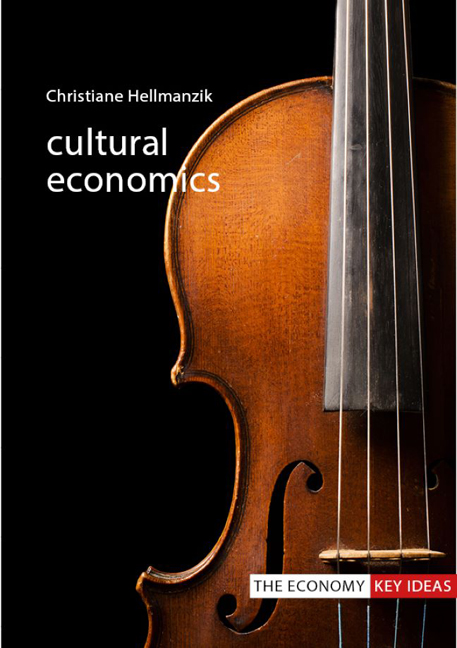Book contents
- Frontmatter
- Contents
- Acknowledgements
- 1 Introducing cultural economics
- 2 Markets, prices and agents
- 3 Society and culture: public provision and institutional aspects
- 4 Demand for culture
- 5 Artists, superstars and creativity
- 6 Quality in the arts and culture
- 7 The organization of cultural industries
- 8 The internet’s impact on cultural sectors
- 9 Globalization’s impact on cultural sectors
- 10 Conclusion
- References
- Index
7 - The organization of cultural industries
Published online by Cambridge University Press: 20 December 2023
- Frontmatter
- Contents
- Acknowledgements
- 1 Introducing cultural economics
- 2 Markets, prices and agents
- 3 Society and culture: public provision and institutional aspects
- 4 Demand for culture
- 5 Artists, superstars and creativity
- 6 Quality in the arts and culture
- 7 The organization of cultural industries
- 8 The internet’s impact on cultural sectors
- 9 Globalization’s impact on cultural sectors
- 10 Conclusion
- References
- Index
Summary
Industrial organization provides us with important insights into how the properties of the good or service in question characterize the market, its prices and quantities sold and how firms compete with each other. Building on Chapter 2, we can examine the tools with which the market structure is analysed and the role industrial organization plays in the creative process and the position of the artist in the market.
We could start by asking the simple question: why are there firms in the cultural industries at all? The famous economist Ronald Coase argued that a firm is simply a way to bundle transactions that happen in a market and thereby reduce participants’ transaction costs. A singer could negotiate publishing, copyright and pricing for each song individually and for each listener separately, but that would be inefficient in terms of allocation of his or her time and would probably involve high administrative costs.
In that sense, purchasing cultural products and services are different from buying a carton of milk, as cultural products are non-standardized and contracts over their exchange between two parties are not as simple as exchanging a carton of milk for money. Thus, the role of the firm in the cultural industry is to mediate between market participants: creators and consumers. Firms thus bundle many interests into one legal and economic entity.
On the supply side of the market, we have two parties: the producer/agent and the artist. The relationship between the firm and the artist often depends on the sector we look at and the bargaining power of the artist. For example, a more famous artist will have more weight in a negotiation for a record deal than an unknown young band. On the other hand, if we think about the big three in terms of private products and services in the cultural sector – namely books, movies and television – typically a handful of large producers dominate the market, which have a lot of power over the terms of the market, such as pricing, pay and the selection of “talent.”
Thus, in this chapter we will add a strategic dimension to our understanding of cultural industries. As these are particular to industries with more than one supplier, I will focus on the large non-public cultural markets: books, music, television, movies and art.
- Type
- Chapter
- Information
- Cultural Economics , pp. 87 - 100Publisher: Agenda PublishingPrint publication year: 2020

